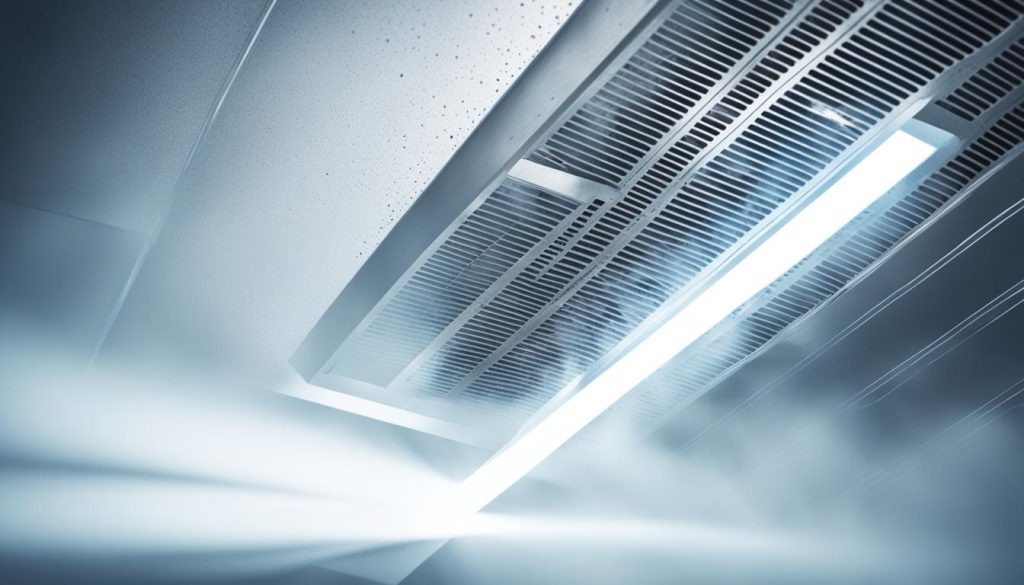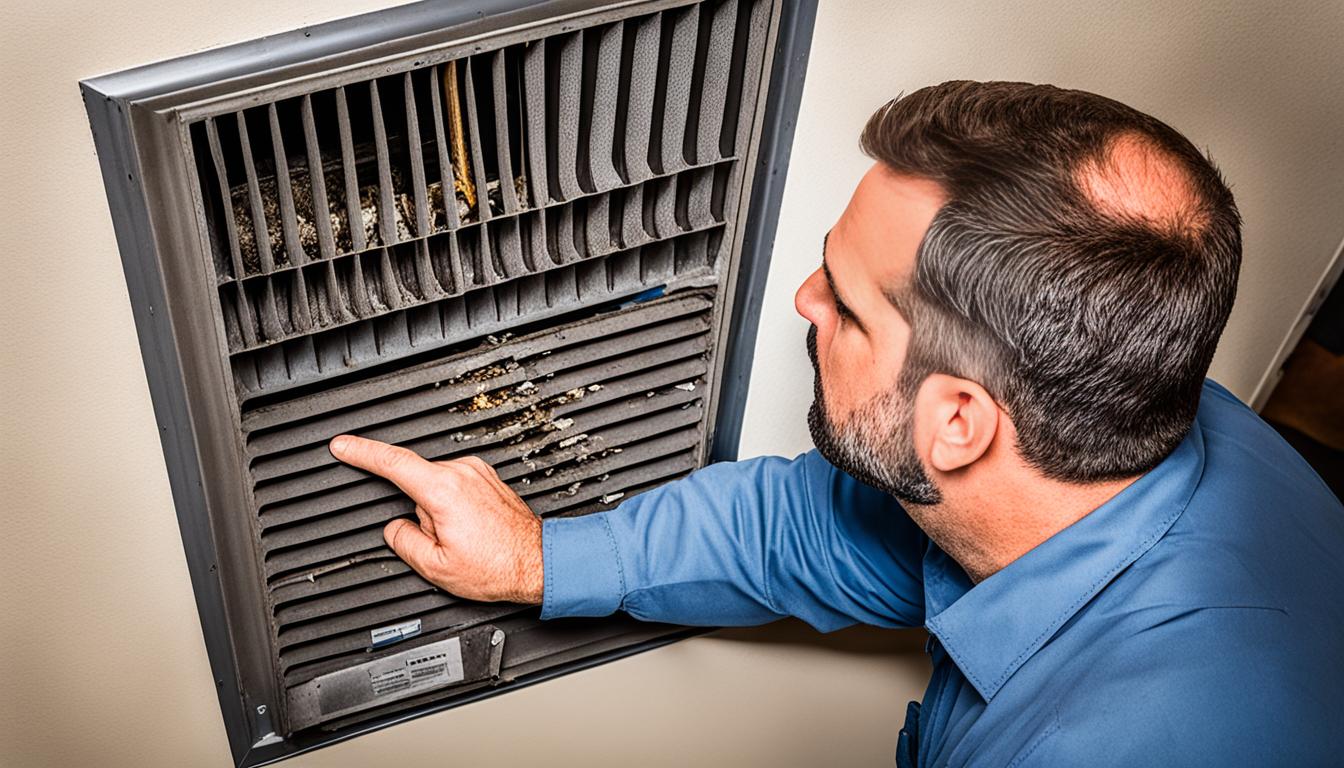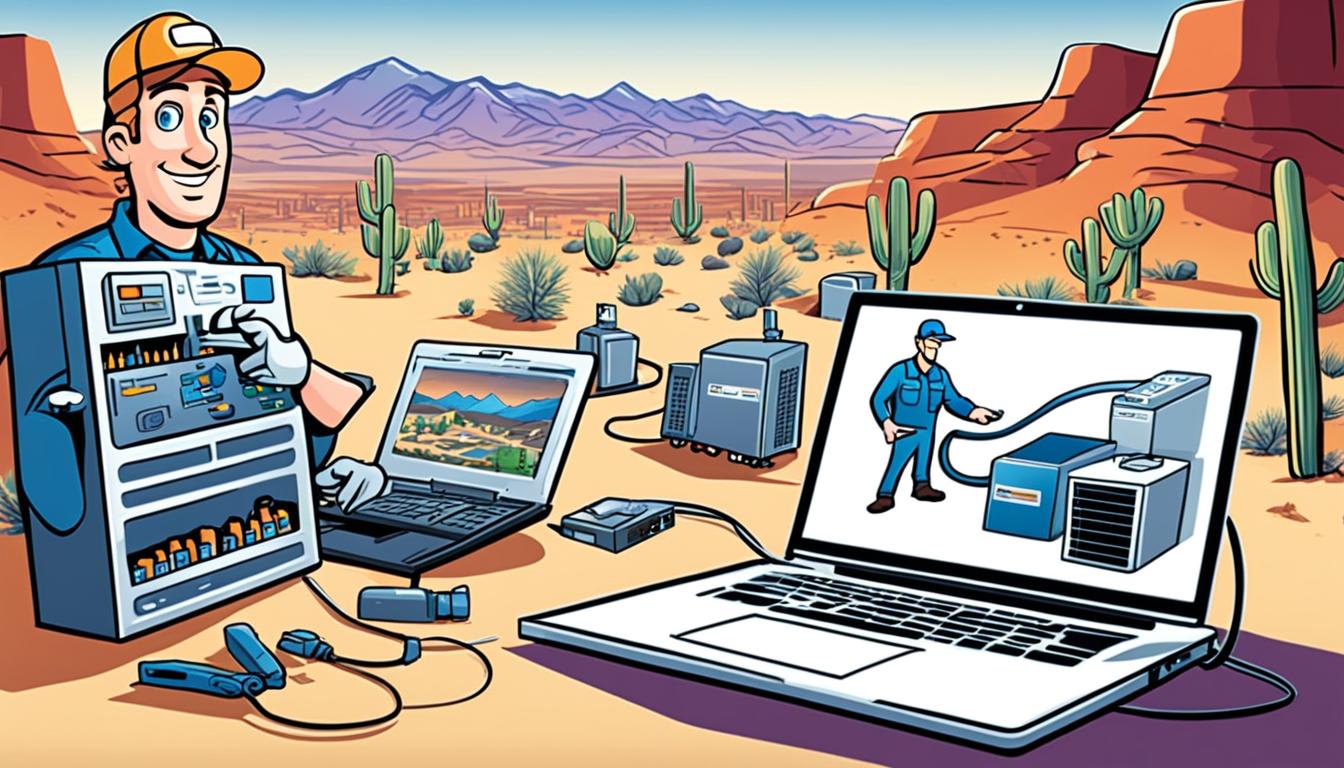Vent cleaning is a crucial aspect of maintaining good indoor air quality and ensuring a safe work environment. However, neglecting vent cleaning can lead to significant liability concerns for businesses. Exposure to indoor pollutants can have a detrimental impact on the health of workers, and there have been court cases where employers have been sued due to the health effects of poor indoor air quality.
Employers have a responsibility to prioritize good indoor air quality and address any air contaminant issues that may arise. Factors such as the design of the building, maintenance of air ducts and ventilation systems, exposure to moisture, and humidity can all influence indoor air quality. To prevent liability issues and ensure compliance with safety standards, it is essential for employers to invest in regular commercial air duct cleaning.
Key Takeaways:
- Poor indoor air quality can lead to health problems and liability concerns for businesses.
- Employers have a responsibility to provide a safe work environment with good indoor air quality.
- Regular commercial air duct cleaning helps prevent liability issues and ensures compliance with safety standards.
- Signs of poor indoor air quality include headaches, fatigue, allergies, and respiratory issues.
- Insurance coverage and liability considerations should be taken into account when hiring vent cleaning services.
Signs and symptoms of poor indoor air quality
Poor indoor air quality can have detrimental effects on the health and well-being of employees. It is crucial to be aware of the signs and symptoms that indicate poor indoor air quality in order to address them promptly and maintain a safe work environment.
Here are some common signs that may suggest poor indoor air quality:
- Headaches: Persistent or recurring headaches can be a result of inhaling pollutants and irritants present in the air.
- Fatigue: Feeling constantly tired or experiencing a lack of energy may be a sign of poor indoor air quality.
- Allergy Problems: Increased allergies, such as sneezing, nasal congestion, and itchy eyes, can be triggered by indoor pollutants.
- Dizziness: Feeling lightheaded or dizzy while indoors may indicate a high concentration of air contaminants.
- Nausea: A feeling of nausea or discomfort when spending time in a specific area may be a result of poor indoor air quality.
- Shortness of Breath: Difficulty breathing or experiencing shortness of breath could be a sign of poor indoor air quality, especially for individuals with pre-existing respiratory conditions like asthma.
Poor indoor air quality doesn’t just affect individual health; it can also impact productivity and absenteeism in the workplace. Employees suffering from symptoms related to poor indoor air quality are more likely to miss work and underperform. Therefore, employers should take proactive measures to ensure a healthy work environment.
Regular ventilation checks, air filtration systems, and air duct cleaning can significantly improve indoor air quality. Employees should also be encouraged to report any symptoms or concerns to their employers so that appropriate actions can be taken. By addressing the signs and symptoms of poor indoor air quality, employers can create a safer and more productive workplace for everyone.
| Signs of Poor Indoor Air Quality | Symptoms of Poor Indoor Air Quality |
|---|---|
| Headaches | Allergy problems |
| Fatigue | Dizziness |
| Allergy problems | Nausea |
| Dizziness | Shortness of breath |
| Nausea | |
| Shortness of breath |
Importance of regular air duct cleaning

Regular air duct cleaning is crucial for maintaining good indoor air quality and preventing liability concerns. By removing pollutants and contaminants from the air ducts, regular cleaning helps improve the overall air quality in a space, which directly impacts the health and well-being of individuals.
Dirty air ducts can become breeding grounds for mold, bacteria, and other allergens, which can lead to respiratory issues and allergies for occupants. By cleaning the air ducts regularly, these harmful substances can be effectively eliminated, reducing the risk of health problems and creating a healthier indoor environment.
In addition to improving air quality, regular air duct cleaning also plays a role in optimizing the efficiency of HVAC systems. Over time, air ducts can accumulate dust and debris, causing the system to work harder and consume more energy. By keeping the air ducts clean, HVAC systems can operate more efficiently, leading to energy savings and cost reduction.
For employers, regular air duct cleaning is not only important for the health and well-being of their employees but also crucial for compliance with safety standards, such as those set by the Occupational Safety and Health Administration (OSHA). It is the responsibility of employers to provide a safe and healthy work environment, and clean air ducts are an integral part of ensuring indoor air quality meets the required standards.
Overall, the benefits of regular air duct cleaning are numerous. It helps maintain good indoor air quality, prevents health issues related to poor air quality, improves HVAC system efficiency, and ensures compliance with safety regulations. Employers should prioritize regular air duct maintenance to create a healthy and safe work environment for their employees.
Key Benefits of Regular Air Duct Cleaning:
- Improves indoor air quality by removing pollutants and contaminants
- Reduces the risk of respiratory issues and allergies
- Eliminates mold and bacteria growth in air ducts
- Increases the efficiency of HVAC systems, reducing energy costs
- Ensures compliance with safety standards, such as OSHA regulations
Insurance and liability considerations for vent cleaning
When it comes to vent cleaning, it is crucial for both businesses and homeowners to consider their insurance coverage. The cleaning process can potentially cause damages such as dents or cracks in vents or ceilings. That’s why it is essential to inquire about the vent cleaning company’s insurance coverage and liability insurance before hiring them.
In addition, homeowners should review their home insurance policies to determine whether damages caused by vent cleaning or related issues are covered. Neglecting regular vent maintenance can have a significant impact on insurance claims in the case of fire or other related damages. To protect your property and ensure adequate coverage, it is highly recommended to maintain appropriate insurance and consult with insurance professionals.
By having proper insurance coverage in place, you can mitigate the potential financial risks associated with vent cleaning and related damages. Taking proactive steps to protect yourself from liability concerns through adequate insurance coverage is vital. It not only provides peace of mind but also ensures that you are prepared for any unforeseen circumstances that may arise during the vent cleaning process.





0 Comments